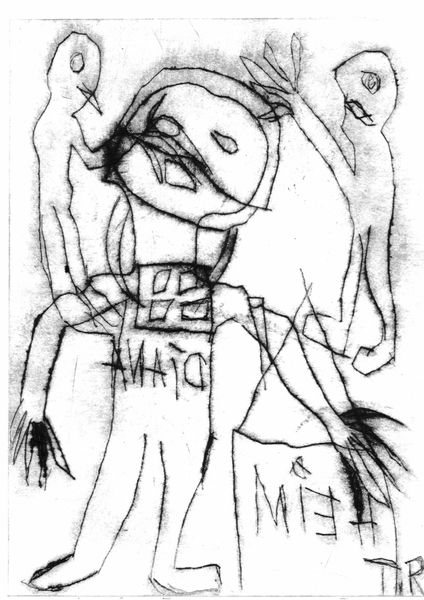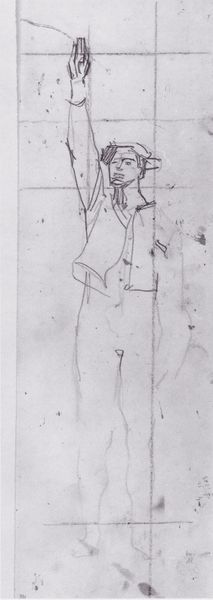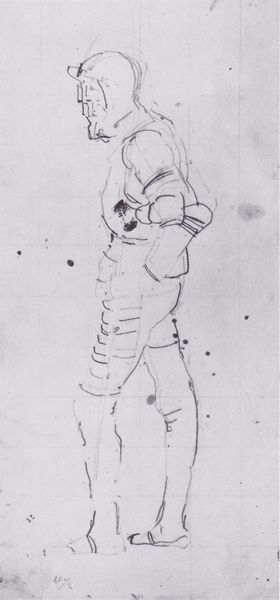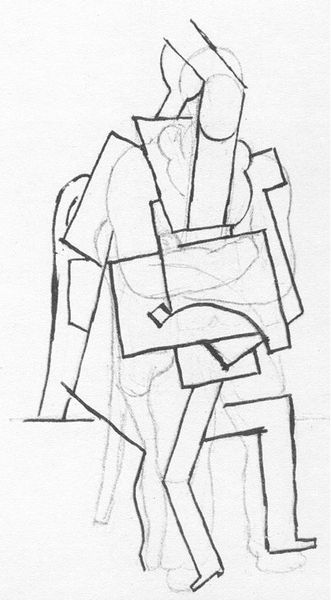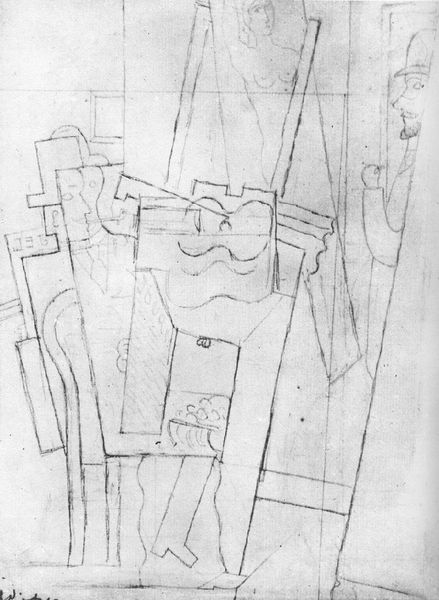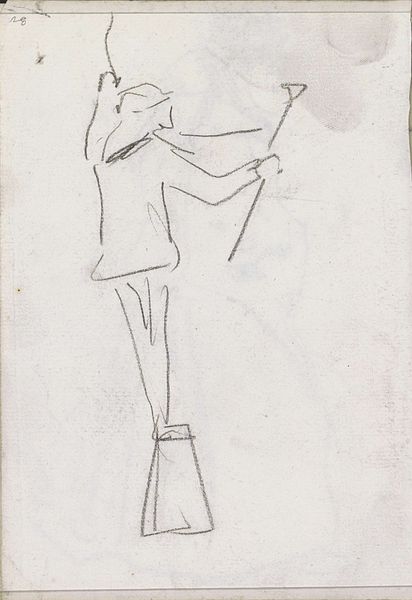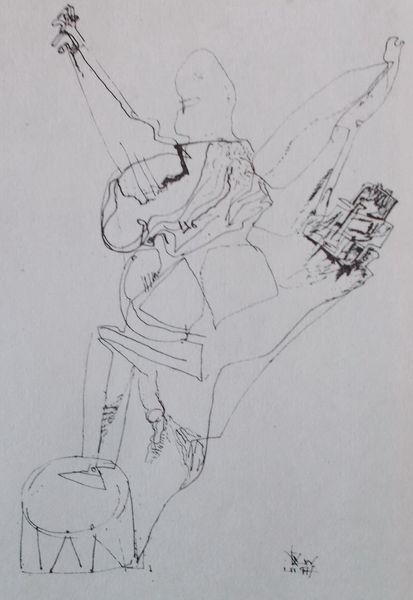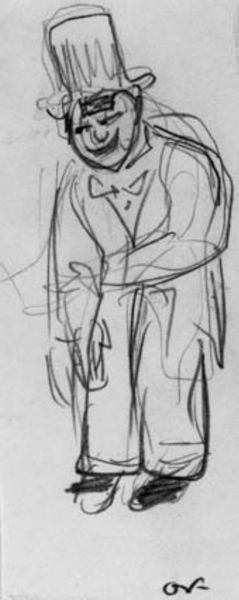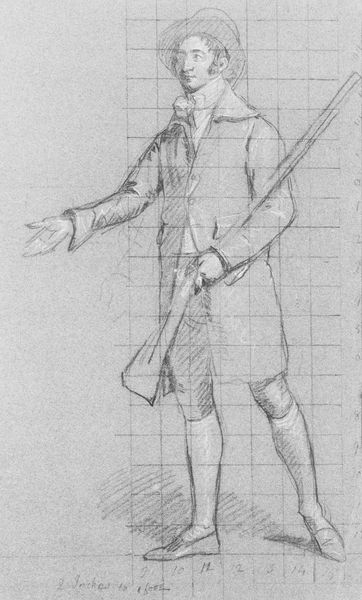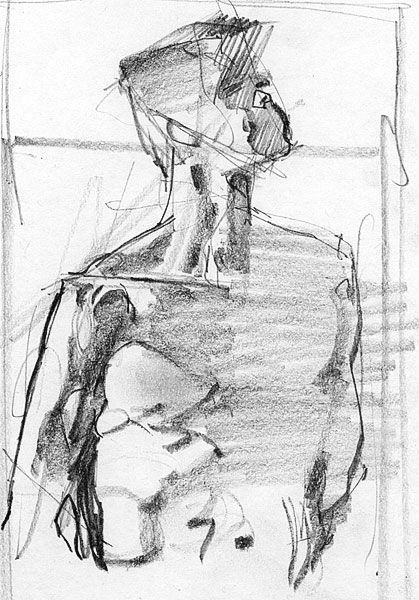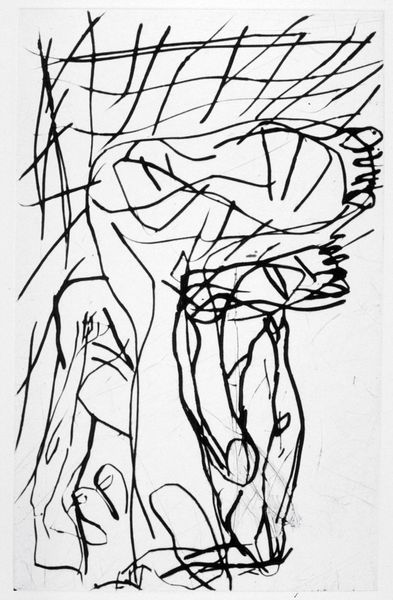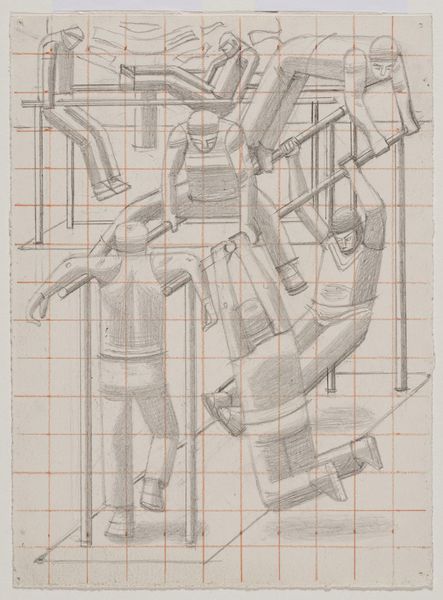
Study for Rhythm of a Russian Dance 1918
0:00
0:00
theovandoesburg
Museum of Modern Art (MoMA), New York City, NY, US
drawing
#
drawing
#
cubism
#
hand-lettering
#
lettering
#
small typography
#
text art
#
hand drawn type
#
typography
#
hand lettering
#
constructivism
#
figuration
#
hand-drawn typeface
#
geometric
#
freehand
#
abstraction
#
line
#
russian-avant-garde
#
small lettering
Dimensions: 8.5 x 6.5 cm
Copyright: Public domain
Editor: Here we have Theo van Doesburg's "Study for Rhythm of a Russian Dance" from 1918, rendered as a drawing. It’s striking how the simplified lines still convey a sense of movement. What do you make of it? Curator: Considering the era, 1918, we can see this not just as an artistic study but as a direct response to the cataclysm of World War I. Van Doesburg's shift to abstraction here is a rejection of traditional artistic values, in favor of a visual language that reflects a new industrial age. Editor: So, the lines themselves are significant? Curator: Precisely. The lines are the building blocks, almost like a blueprint. This connects to Constructivism’s utopian aims. These artists sought to build a new visual culture rooted in geometric forms. Labor, materials, production – all these come into play. How does this object propose a new way of seeing? Editor: That’s interesting because it appears that he draws his figure freely by hand. It doesn't come across as very industrial, despite the angles and boxes used in the representation. Curator: Yes, but consider what the "Russian Dance" represents. Is this a depiction of joyful human expression? Or, is the artist attempting to understand if you can engineer the expression? Perhaps deconstruct the rhythm through rational geometries, the lines stand in for the motion and, maybe, the loss thereof. This embodies tension, doesn't it? Between the artistic impulse and social, rational production. Editor: I never thought of it that way before. I was so focused on the Russian influence through dance, but you have given me a lot to consider regarding production and labor during that time! Thank you. Curator: Absolutely, the piece invites consideration of social factors, rather than solely celebrating form or figure.
Comments
No comments
Be the first to comment and join the conversation on the ultimate creative platform.
